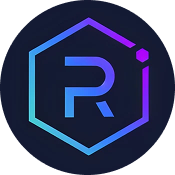In the quest for scalable and permanent blockchain solutions, Zilliqa and Arweave stand out as pioneers in their respective domains—high-throughput smart contract platform versus immutable data storage. While Zilliqa tackles the challenge of transaction speed and network efficiency through innovative sharding, Arweave offers a groundbreaking approach to data permanence with its sustainable storage model. For crypto enthusiasts and investors, understanding the core differences, technical strengths, and ideal use cases of these two platforms is essential to making informed decisions in this rapidly evolving space.
Short on time? Jump to Zilliqa vs Arweave Comparison
Understanding Zilliqa and Arweave ?
Zilliqa, launched in 2017, is renowned for being the first blockchain to implement sharding at scale, addressing the critical issue of scalability that hampers many blockchain networks. Its unique architecture allows it to process thousands of transactions per second, making it suitable for decentralized applications requiring high throughput, such as finance and gaming. Zilliqa employs its own smart contract language, Scilla, designed with security in mind, and is actively working towards Ethereum Virtual Machine (EVM) compatibility to broaden developer accessibility.
Arweave, on the other hand, is a decentralized storage network focused on data permanence. Using a novel proof-of-access consensus mechanism, it incentivizes miners to store data forever through a one-time fee paid into a sustainability endowment. Its innovative 'permaweb' enables developers to build permanent websites and applications, ensuring data cannot be altered or deleted. Unlike Zilliqa's focus on transaction speed, Arweave prioritizes long-term data integrity and accessibility, making it invaluable for archiving and web archival projects.
Both platforms leverage blockchain technology but serve distinctly different purposes: Zilliqa aims to facilitate scalable smart contract execution, while Arweave provides a permanent data layer. Their architectural designs reflect these goals—sharding for Zilliqa's scalability and a proof-of-access model for Arweave's sustainability and permanence. As blockchain technology matures, understanding these differences helps investors and developers choose the right platform based on their specific needs—speed versus permanence.
Recent developments like Zilliqa’s upcoming network upgrade to Zilliqa 2.0 with enhanced scalability and Ethereum compatibility mark its evolution towards broader usability. Meanwhile, Arweave continues to expand its ecosystem, with increasing adoption of its permanent storage solutions across various projects. Both platforms demonstrate innovative approaches to their core challenges, making their comparison a pertinent exploration of blockchain’s diverse potential.
Key Differences Between Zilliqa and Arweave
Primary Function
- Zilliqa: Zilliqa is primarily designed as a high-throughput blockchain platform capable of executing complex smart contracts at scale, making it ideal for decentralized applications that demand fast transaction processing and security. Its architecture emphasizes scalability through sharding, allowing the network to grow linearly without sacrificing performance or decentralization. The platform also supports low gas fees, facilitating micro-payments and real-time applications.
- Arweave: Arweave focuses on permanent data storage, providing an immutable and decentralized archive for data, web pages, and applications. Its unique proof-of-access consensus ensures that data remains stored indefinitely, backed by a sustainable endowment model. Unlike Zilliqa, which prioritizes transaction speed and smart contract execution, Arweave emphasizes data permanence, accessibility, and the long-term preservation of information.
Consensus Mechanism
- Zilliqa: Zilliqa employs a modified Practical Byzantine Fault Tolerance (pBFT) consensus algorithm combined with its sharding approach to achieve fast finality and high throughput. The network’s shift towards the Fast-HotStuff consensus aims to reduce finality time further, supporting real-time transaction processing and dynamic scalability.
- Arweave: Arweave uses a proof-of-access (PoA) consensus mechanism, where miners are required to prove they have accessed previous data blocks to earn rewards. This innovative approach ensures that data is continually replicated and stored over time, securing the network’s goal of permanent data preservation. The sustainability model is built into the protocol, funded by a one-time endowment fee paid at data upload.
Smart Contract Capabilities
- Zilliqa: Zilliqa hosts a native smart contract language, Scilla, which is designed for formal verification and security. Its upcoming upgrade to Ethereum Virtual Machine compatibility aims to enable developers to deploy Solidity-based smart contracts seamlessly, expanding its ecosystem and usability for complex decentralized applications.
- Arweave: Arweave does not natively support smart contracts in the traditional sense but allows developers to create permanent web applications and data-driven content that are stored immutably on its network. Its focus is on data permanence rather than programmable logic, making it more suitable for archival and web preservation rather than complex contract execution.
Data Storage Model
- Zilliqa: Zilliqa’s architecture is optimized for fast, scalable transaction processing, with each transaction recorded on a blockchain distributed across multiple shards. Its design supports decentralized applications requiring high throughput, with transaction finality achieved within a single block.
- Arweave: Arweave’s storage model is built around a sustainable endowment that funds the perpetual storage of data. Data is stored permanently after a one-time fee, and the network incentivizes miners to replicate and archive this data indefinitely, ensuring long-term accessibility and immutability.
Use Cases
- Zilliqa: Ideal for decentralized finance (DeFi), gaming, and enterprise applications that demand high scalability, fast transaction finality, and secure smart contract execution. Zilliqa’s infrastructure is suited for applications requiring real-time data processing and microtransactions.
- Arweave: Perfect for web archival, content preservation, and any application requiring immutable, permanent data storage. Arweave’s permaweb is particularly valuable for historical record-keeping, journalism, and decentralized web hosting where data integrity over time is paramount.
Zilliqa vs Arweave Comparison
| Feature | ✅ Zilliqa | ✅ Arweave |
|---|---|---|
| Primary Function | High-throughput smart contract platform with sharding | Permanent, immutable data storage with sustainable endowment |
| Consensus Mechanism | pBFT + Fast-HotStuff for scalability and fast finality | Proof-of-access ensuring data replication and permanence |
| Smart Contract Support | Native Scilla language; EVM compatibility coming | Supports web apps and data storage, not native smart contracts |
| Data Storage Model | Distributed blockchain with sharding for scalability | Endowment-backed permanent storage with one-time fee |
| Ideal Use Cases | Decentralized apps needing high speed and security | Web preservation, content immutability, archival |
Ideal For
Choose Zilliqa: Developers and enterprises seeking scalable, secure smart contract platforms.
Choose Arweave: Organizations and individuals needing long-term, immutable data storage.
Conclusion: Zilliqa vs Arweave
Zilliqa and Arweave exemplify the diverse directions blockchain technology can take—one prioritizing scalability and transaction efficiency, the other emphasizing data permanence and longevity. Zilliqa’s innovative sharding architecture positions it as a prime choice for applications demanding high throughput and security, while Arweave’s sustainable storage model caters to needs for long-term data integrity and web preservation.
Choosing between these platforms hinges on your specific project requirements. If your focus is on building scalable decentralized applications with complex logic, Zilliqa offers a robust environment. Conversely, if your goal is to archive information forever or create immutable web content, Arweave provides a uniquely sustainable solution. Both platforms continue to evolve, promising exciting developments that could further blur the lines or expand their respective use cases.






